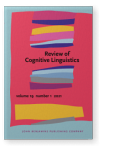Vol. 19:1 (2021) ► pp.26–50
Blood metaphors and metonymies in Jordanian Arabic and English
This study aims to examine the target concepts of metaphorical and metonymical uses of blood in Jordanian Arabic (JA) through adopting Conceptual Metaphor Theory as based on the notion of main meaning focus (Kövecses, 2010, 2011) as a theoretical framework. A 40,000 words specialized corpus was built for the purpose of this study. Data was analyzed employing WordSmith Tools (version 6), which enables the processing of Arabic data. The results reveal that blood as a source domain can be used to conceptualize character traits, essence and emotion in JA through metonymy-based-metaphors and scenic metaphors in which the source domain is constructed metonymically. Similarities and differences were detected between JA and other languages investigated in the literature. Similarities were ascribed to cognitive embodiment of bodily substances, i.e., blood, to conceptualize abstract concepts such as character traits and emotion, while differences were attributed to socio-cultural embodiment of certain qualities of blood shared by members of the Jordanian community.
Article outline
- 1.Introduction
- 2.Literature review
- 2.1Theoretical framework
- 2.2Previous studies on blood and body parts
- 3.Method
- 3.1Corpus
- 3.2Data analysis
- 3.3Identification procedure of metaphors and metonymies
- 4.Results
- 4.1 blood as a character trait
- 4.2
blood as essence
- I. blood as life/death
- II. blood as significance
- III. blood as origin
- IV. blood as quality
- 4.3 blood as an emotion
- 5.Discussion
- 6.Conclusion
- Notes
-
References
